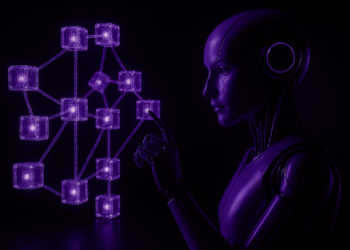Agile as a whole makes organizations future proof. Agile organizations are highly responsive, able to keep up and excel the digital transformation and innovate continuously. Today, a lot of companies still don’t have time to improve or get bogged down in todays thinking. The Integrated Agile Transformation Model shakes off this pattern. I will briefly describe the process in this article.
The rhythm of traditional work
January 2 1994 I started my career in IT. At the time I had a lot of fun. After a while I joined one of the leading IT-consultancy companies and I got into the rhythm of traditional work. Always a little part of the total delivery flow. In the beginning as a developer and later as technical designer. Looking back, the development part was the most fun. There you create something, see how it works, doing what is requested, a great experience every time when you delivered.
After being promoted (yes, you read it well, getting out of development was a promotion), I got into design stuff. The type of design in the middle of the delivery sequence. Client interaction was zero, no purpose identified whatsoever and then it crept in: the feeling of “not feeling happy”. Since you put a lot of free time in work, it should better be fun and valuable, especially for the one doing it, in this case me…
Mid 1994 I was again on a multiyear project, delivering six months of technical design together with two others. My job basically was more or less translating a document into another document and handing it over to someone (a programmer) who was perfectly able to read the first document in the first place. Hence, this way degrading the added value of my work at the time to approximately zero…
The change: Rapid Application Development
I took a decision: I explained to my management I did not want to do this kind of work anymore. A few weeks later I was asked to participate in a Rapid Application Development (RAD) project, for which I am still thankful to Willem – my manager at that time. Getting into this project, a pilot with the Dutch Royal Navy, felt awesome. The natural way of working, the interaction, the iterations, the prototyping, it all made sense. RAD also had a lot of things still to figure out and to improve, so the time of experimenting began. I remember, sitting on the couch, evening after evening, trying to figure it out, as well as the nights sitting in pizza-sessions to identify lessons learned. Common sense was always on top (Agile is for me structured common sense) and the focus was on interaction. These were and are still essential.
Structured Common Sense
This is where I am today. Agile is structured common sense. ‘Complexity is failed simplicity’ as one of our senior coaches likes to say. Having a focus on the interaction rituals is the fundament for success. Technique can, once you have the rituals in place, make you excel. The success in Agile comes with the quality and discipline you apply when you actually do the Agile rituals. The Agile rituals like dailies, heart beats, retro’s, dam’s, etc. are all very simple to do.
Bringing this structured common sense into the client organization is what I did for the first time in 1998. I noticed people often do it half, have a motivation not to show up, very often stick to old ways of working while management keeps old processes for decision making, evaluation, delivery, acceptance in place. Changing the mindset of organizations seems easy, so how come transforming to Agile is often so difficult?
Step back in old patterns? Change the paradigm
After a while I noticed that individual and organizations tend to fall back into old patterns. We can talk about change management for ever, but you have to identify the cause of this first and then act accordingly. I identified that paradigms (= a view or a perception) are not changed by learning Agile rituals. When you don’t change the paradigms inherent to organization (and therefore the people), bit by bit people and organizations downgrade to traditional ways. This is because the traditional ways embed the old paradigms. You can find them in hierarchies, decision making processes, standards such as for documentation and bureaucracy.
Transforming an organization into an Agile organization means changing the paradigms. Focus on the organization itself, because we can not change individuals. Individuals can be forced to do different things but the moment the outside pressure is gone they will step back into the old routine. You can only change the people, and people are the ones who deliver even when you change their habitat or their environment. And this is where I focus on with the Integrated Agile Transformation Model (IATM).
IATM makes the organisation Future proof
IATM has a strong focus on the environment from a very holistic point of view, so both in the vertical, the horizontal and also including all supporting entities in the organization such as HR, marketing, legal, etc. The flow of IATM is the environment first, taking people into the change process actually doing Agile. Then going into learning this with high quality and discipline as a team, followed by individual refinement so everyone can find his own ambition and fun. This way the transformation will be sustainable.
Don’t forget being Agile as a whole is essential to make an organization future proof. Agile working makes an organization ready to work highly responsive in an ever changing digital world, either to undergo a digital transformation or to maintain the capability of high responsiveness in the digital world.
Want to go deeper in Agile transformations using IATM, read this first article of a series of 3 : https://weblog.wemanity.com/into-a-transformation-journey-interview-with-arie-van-bennekum-on-an-global-scaled-transformation/












